LSCAC 2024
7th International Conference
on Language, Society, and Culture in Asian Contexts
Theme: Societies and Cultures in Asia under the Aegis of Digital Technologies
THE IMPACT OF DIGITAL TECHNOLOGIES IN VIETNAM
- The case of French as a foreign language in schools (programming, textbook design, teaching/learning support)
Phạm Thị Anh Nga
Associate Professor-Doctor, Retired Teacher
University of Foreign Languages and International Studies - University of Hue
Starting from the definition of the concept of digital technologies, its impacts on current life in general and on multidisciplinary and transdisciplinary fields in the world, we review and evaluate the practical application of digital technology in Vietnam, in translation and scientific research, in the health and multicultural education sectors, in the teaching/learning of foreign languages (one and several foreign languages).
I pay particular attention to the analysis of the application of digital technology in the design of universalization programs for foreign languages, in the development of French as a foreign language 1 and French as a foreign language 2 textbooks, in the identification of positive aspects and at the same time to point out their shortcomings and gaps.
And this, in an interdisciplinary and intercultural spirit.
1. Digital technologies in today's world and in Vietnam
1.1. What are digital technologies?
To answer this initial question, I adopt this definition from www.studysmarter.fr: “The definition of digital technology refers to digital devices, systems and resources that help create, store and manage data. An important aspect of digital technology is information technology (IT) which refers to the use of computers to process data and information.” These can be basic tools (email) or more complex tools (intelligent robotics, artificial intelligence).
As examples of digital technology, most analysts are satisfied with examples taken from the business context: enterprise resource planning, big data, e-commerce, whose key points are as follows:
- Digital technology includes digital devices, systems and resources that help create, store and manage data. It is a crucial element of modern businesses to improve workflow and customer experience.
- Its importance is explained by the fact that it allows to provide timely support to customers in their purchasing journey. In addition, the adoption of technology within an organization can bring together data and systems for a reduced workflow.
- The advantages of digital technology come from (1) planning the source of the business, (2) increasing communication with customers and (3) improving productivity.
- Digital technology also has disadvantages: high installation costs, employee resistance and data security.
But digital technologies also affect several other areas: transportation, security, education, health, environment, industry, public services, and influence not only companies but also individuals, and interpersonal communication whose multiple uses are growing day by day. (talentsdunumerique.com)
1.2. Impact of digital technologies in today’s world
“Never in history has an innovation spread as fast as digital technologies: they have affected nearly half the population of developing countries in just two decades, disrupting societies.” (www.un.org)
Here I review some representative findings:
a. The different types of digital technologies
Digital technologies can be found all around us. Some examples:
 |
| (inovency.fr) |
• 3D Painting
• Cloud Computing
• Digital Camera
• Social Media
• Digital Clocks
• Video Streaming
• 5G Data
b. Digital Technology: Its Benefits and Challenges
In contrast to analog technology, digital technology allows for the storage of large amounts of data and the transmission of digital signals much faster. Digital technology is transforming every aspect of daily life: remote working, online shopping, social media, smartphones, online gaming, multimedia…
 |
| (inovency.fr) |
· Better Data Collection
· Creates a Digital Culture
· Increased Profits
· Agilité
· Improved Customer Experience
· Increased Productivity
And the challenges of adopting digital technology:
 |
| (inovency.fr) |
· Inadequate change management strategy
· Complex software & technology
· Driving adoption of contemporary tools and processes
· Continuous evolution of customer needs
· Inadequate digital transformation strategy
· Lack of adequate it skills
With the development of increasingly sophisticated digital technologies, analysts have estimated that “800 million people could lose their jobs by 2030, due to automation”, and surveys reveal that “the majority of employed people worry that they do not have enough training or skills to find a well-paid job”. (www.un.org)
c. The impact of digital technologies in selected areas
In the field of health: artificial intelligence helps save lives, diagnose diseases and increase life expectancy.
In the field of teaching/learning: thanks to virtual learning environments and distance learning opportunities, access to educational programmes could become possible for people who would normally be excluded.
However, people who do not yet have access to these technologies find themselves even more marginalised (women, the elderly or disabled, members of ethnic or linguistic minorities or indigenous groups, people living in poor or remote areas, etc.)
1.3. What changes in the Vietnamese context?
Vietnam has recently made significant progress in the use of digital technologies in different sectors of life: health, education, finance - banking, agriculture, transport and logistics, natural resources and environment, industrial production, energy, etc., as noted on the website dx.thuathienhue.gov.vn.
a. Different concepts have emerged: digital government, digital economy, digital society, digital citizen, digital identity, digital infrastructure and digital culture.
For example: from online public services to the integration of personal information into a single citizen identity card (căn cước công dân), through online purchases and payments by bank transfer, online conferences via Skype, Zoom or other digital means; access to the Internet, to different platforms and especially to machine translation available on Google or other networks considerably promotes and facilitates the work of the translator and the researcher and their communication especially remotely.
I place particular emphasis on the notions of digital citizen and digital culture.
What is a digital citizen?
Nine elements constitute digital citizenship: (1) the ability to access digital sources of information, (2) the ability to communicate in the digital environment, (3) basic digital skills, (4) buying and selling goods online, (5) ethical standards in the digital environment, (6) physical and psychological protection against influences in the digital environment, (7) rights and responsibilities of citizens in the digital environment, (8) identification and authentication of personal data and (9) confidentiality in the digital environment.
What about digital culture?
While culture in real society has been formed for hundreds and thousands of years, digital society has only been formed for recent decades, very recently. A culture that is therefore young, under construction: it is about the rules of conduct, ethical standards and the enjoyment of cultural values of people in the digital environment.
b. Regarding the health and education sectors, the projects and plans speak volumes, according to the website dx.thuathienhue.gov.vn:
For health, it is planned:
- to develop a platform to support remote medical examinations and treatments, thus helping to reduce the burden on medical facilities, limit contact with people and reduce the risk of cross-infection.
- to gradually build and constitute a health care and disease prevention system based on digital technologies (administrative reform, reducing hospital burden, improving the quality of medical examination and treatment, electronic medical records instead of paper invoices, etc.).
- to undertake the formation of smart hospitals, to build a smart health management platform based on digital technology, integrating information and data, and creating a national health database.
- to test the implementation of the “Every person has a personal doctor” initiative with the aim of everyone having a personal digital health record, and on this basis, doctors will advise and treat them like a personal doctor, thus forming a complete digital medical system.
- to create a legal corridor to facilitate remote medical examinations and treatments as well as electronic prescriptions.
For education, it is:
- developing a platform to support distance learning/teaching, fully applying digital technology in teaching/learning management (digitizing documents and textbooks, creating a platform to share face-to-face and online teaching and learning resources, developing technology for education towards individualized training.
- deploying and implementing an educational model integrating science-technology-engineering-mathematics and arts, commerce, enterprise, English training and digital skills, ensuring safety and security at all levels of education, adjusting and supplementing training programs from undergraduate to graduate level, professional training on basic digital technologies (artificial intelligence, big data, cloud computing, Internet of Things).
- providing mass online courses open to all to improve access to education through digital technology (training, retraining and re-training to improve digital skills).
However, the path between dream and reality seems long, even endless. And inequality and inequity still exist between individuals, between regions, and even between men and women.
2. The case of French LV1 and LV2 in schools
2.1. From intermediate reference to school textbooks
Concerning foreign languages in schools, the Ministry of Education and Training (MEF) of Vietnam has opted for the teaching/learning of two foreign languages, with priority given to English as the first foreign language. French finds its dual place, either as the first foreign language (LV1) or as the second foreign language (LV2).
a. Design of the intermediate framework of skills in the French language
On the basis of the common language framework for all foreign languages decreed by the MEF, an intermediate framework of skills in the French language was designed (levels A1.1, A1.2, A2.1, A2.2, B1.1, B1.2) whose design took advantage of existing frameworks in Western countries (including the European CECR[1]) and using available digital resources.
b. Design of the French as a Foreign Language Program
Teams of designers were created to design the French as a First Foreign Language (LV1) and French as a Second Foreign Language (LV2) programs.
The designers called upon for the task (teachers from schools or universities in different regions of the country) worked mainly remotely, communicated via the Internet and had meetings on Skype. Face-to-face work sessions were rather rare: consequently, digital technologies regularly and effectively spread their wings there.
c. Development of French LV1 and LV2 textbooks (Tiếng Pháp NN1 and NN2)
After the design of the programs, comes the development of the manuals. Starting first with the Netado.vn method (digital and universal) which I will talk about a little later. Teams of developers, always stationed in schools and universities in the North, Center and South, work alone where everyone is, document themselves and communicate by taking advantage of the benefits of digital technologies. Face-to-face meetings are almost all supported by Crefap-OIF[2], whose office is in Ho Chi Minh City.
The manuals are designed from the files proposed by each author (designer), deposited on Google Drive, read and reread by the other members of the team for exchanges and improvement. The finalized manuals (student books), teaching guides (teacher books) and exercise books are presented in the form of files (Word, Libre Office or PDF) for evaluation before being finally printed.
 |
| French LV2, 1st volume (6th grade) |
2.2. The NETADO.VN method: design, operation and final products strongly linked to digital technologies
a. Organization and management
The project to build this French as a second foreign language method is part of a cooperation framework between Vietnam (MEF - Ministry of Education and Training) and the OIF (DLFCD16 - “French Language, Culture and Diversity Directorate” and DFEN17 - “Economic and Digital Francophonie Directorate”). This project benefits from dual expertise from the OIF:
- Alongside the enriching and effective educational support of a French colleague, Ms. Adeline Gaudel (definition of content, editorial line and all didactic aspects related to this project) who supported the team of designers until the end of the first volume;
- the team benefited from the technical support of a French colleague, Mr. Sébastien Hache, for the design of the manuals (methodology, remote collaborative work) up to the design of an editable and printable PDF and the production of digital supplements; it was this colleague who, from the beginning of the project, introduced the designers to digital tools essential for the design work, and who continues to support them with insight.
The organization and coordination were ensured by the MEF and especially by the Crefap-OIF which supports the designers very closely and manages the financing of this project.
b. Design of the method with the support of digital technologies
The six authors of the method, distributed by their official function in different regions of the country, communicate remotely using the available means (email, telephone, Skype, etc.). The distribution of tasks, working in pairs, planning, deadlines, etc. are mostly discussed remotely and very rarely in person, hence the essential use of available digital technologies.
The team was also accompanied by a group of secondary school teachers contacted by the MEF, for the proofreading of the products and the creation of digital supplements. These assistants also, still in post, worked mainly remotely.
Consequently, the use of a common account on Google Drive proved necessary and effective for communication between members (authors, assistants and experts) and the exchange of files created, for management and assembly with a view to a final product. Each in their own corner but connected and in communication with everyone, this was a way of working adopted effectively, thanks to digital technologies, since 2015, well before the COVID pandemic period.
Examples of planning for the design of the 2nd and 3rd volumes:
 |
| Planning for the last 4 units of Netado.vn 2 (version of July 15, 2017) |
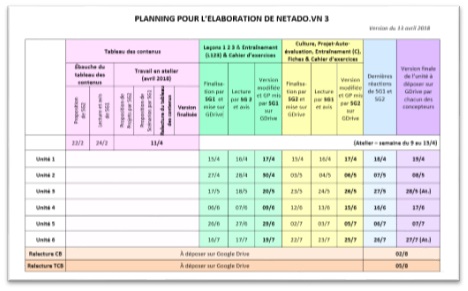 |
| Planning for Netado.vn 3 (version of April 13, 2018) |
Furthermore, unlike other existing elaborate manuals, for this method the authors were obliged to design the manuals not only in terms of content but also in terms of form (layout, presentation of double pages in Libre Office, choice of royalty-free images or iconographic documents to integrate them into the manuals: a task requiring in-depth research on the Internet, as well as the collection and management of links justifying the “royalty-free” status.
 |
| An example of a double-page template (a ready-to-use framework for all authors) |
 |
| Links attesting to the “royalty-free” status of the iconographic elements of a teaching unit |
c. Final products
Let us first note the name of the Netado.vn method: a name with “Net” and “.vn”, in the spirit of a digital culture in and out of the classroom (for teachers as well as students).
The method envisaged for FLV2 will be composed of 7 volumes or manuals, each intended for a secondary school class, from 6th to 12th grade, appropriately to the program decreed by the MEF. But it is also a “free” and open method that is particularly situated within the framework of Creative Commons licenses: the CC BY SA license, which “allows others to remix, arrange, and adapt your work, even for commercial purposes, as long as you are given credit by citing your name and the new creations are distributed under identical conditions. This license is often compared to free software licenses, “open source” or “copyleft”. All new works based on yours will have the same license, and any derivative work may be used even for commercial purposes. This is the license used by Wikipedia; it is recommended for works that could benefit from the incorporation of content from Wikipedia and other similarly licensed projects.” (https://creativecommons.org/licenses/)
The components of the method (for a volume or manual):
- The student's book (printed version & digital version on the site netado.vn in pdf/odt)
- The teacher's book or teaching guide (printed version in view and especially digital version in pdf/odt)
- The digital supplements on the site netado.vn:
+ The sound files of the manual
+ The additional sheets (grammar, lexicon, culture, communication…)
+ The sound animations (with Geoconstruction)
+ The MCQs
|
||
|
|
||
|
 |
| The site netado.vn (which no longer exists) |
For animated digital supplements, “these are small animations (with or without sound) that illustrate concepts. They can be compared to small cartoons. Some animated supplements can be animated corrections. They allow a correction to be shown in its entire chronology, which can be a great help for students.” (Sébastien Hache).
 |
| Animation on numbers in Netado.vn 1 (cf. Sébastien Hache) |
d. Netado.vn: closure and opening
- Project shutdown
While the first two volumes (manuals) were published in their printed form and implemented in schools throughout the country (with educational courses for better use of the manuals), and the design of the 3rd volume (manual) was almost finished and the products ready for finalization, an unexpected shutdown occurred, completely paralyzing any follow-up. We did not have any relevant official explanations for this decision: political and economic issues? change in priorities on the part of the OIF?
Following this project shutdown, the companion site netado.vn was recently deleted (where the student books in PDF, the sound files and the digital animations accessible to all were located, as well as the teacher books reserved for teachers, accessible only with a password). Now, the method is only available on another platform, with exclusively the PDFs of the student's books and the sound files of Netado.vn 1 and Netado.vn 2:
https://parlonsfrancais.francophonie.org/ressources/manuel-de-francais-lv2/
- Opening
Fortunately, thanks to its status as a “free method” and the free adaptation and printing rights linked to the free CC BY SA license, the method has had another life and the first volume (or manual) was adapted to the Burmese public by Burmese colleagues, accompanied by French linguistic attachés and the AUF[3] in Myanmar.
A new Burmese manual has thus seen the light of day. I was personally asked in 2020 to provide a teaching internship (end of 2020) to introduce Burmese teachers to the methodological choices and the use of the manual thus adapted. The period planned for the internship was approaching, the contents as well as the methodology for facilitating the internship were ready; unfortunately, the alarming situation of the pandemic made me abandon the internship and apologize for it.
 |
| The 1st Netado.vn 1 manual of the Vietnamese team (2017) | The Burmese Netado-1 Manual (2020) |
Moreover, the “free method” Netado.vn, with only its two first volumes officially published, not only was adapted for its first volume by Burmese colleagues, but also contributed considerably to the design of French LV1 and LV2 textbooks in Vietnam: through its journey and methodology (most of the designers being the same as for Netado.vn), the contents and form of the products obtained remain in any case a model to follow, with adaptation and modifications.
e. Some experiences
Personally, I participated in the Netado.vn project as author of the 7 textbooks for secondary school in Vietnam (middle and high school level) and teaching guides, as well as some digital supplements for the netado.vn site of the method. I was also responsible for the editor-in-chief for the first four manuals (middle level): harmonizing the joint work, distributing tasks, proposing an annual schedule and managing it, having the final say on the final version of the products and being responsible for it.
For work requiring the use of new technologies, I find it essential:
- mastery of the appropriate technological (and digital) means.
- use of “.odt” files (Libre Office) instead of “.doc” or . “docx” files (Word) in the layout provided by the authors themselves, then conversion to PDF files.
- creation from the beginning of “model” type files for each product category (manual pages, supplementary sheets, etc.).
For the design of a product under a free license (CC BY SA), it would be necessary to:
- be aware of the concept of “under a free license” and make an effort to respect the rules of the game.
- use royalty-free images for their use in manuals, and manage links certifying this freedom of rights.
- possible modification of the products in detail, for both content and form, with a view to application to other audiences and other countries.
To conclude
Thus, in Asia as in other continents, digital technologies have opened a new era in the lives of all of us, by promoting not only practical uses in our daily lives, but also rapid and effective connections, exchanges and interactions in different areas of research, creation and production of common goods.
Personally, I have had an enriched professional experience thanks to these digital technologies, in the work of developing a foreign language method, whose training, monitoring, ancillary activities and result, miraculously, are not only linked to digital technologies, but are located and defined in the very heart of digital technologies.
As for the present communication brought to the conference, I would never have been able to produce it without using digital technologies, both in the documentation, the exchanges with other colleagues, the use of real-life experiences, archives (documents created by myself or others) saved in digital form, etc., and in the writing of the text itself.
As a last word on digital technologies in modern life, I would like to take up the idea of the site inovency.fr, according to which “Digital technology has changed our way of life”, and I opt for this brief observation, apparently shocking but realistic and justified, from the site dx.thuathienhue.gov.vn: “digital transformation or death”.
Indeed, to catch up with a moving train that is constantly evolving, it is better to start as early as possible, while trying to avoid missteps, potential pitfalls and extremist behavior.
Reference documents:
- Abid Haleem…, “Understanding the role of digital technologies in education: A review”, Sustainable Operations and Computers, Volume 3, 2022, pages 275-285 (https://www.sciencedirect.com/science/article/pii/S2666412722000137, 07.10.2024)
- Diane Amphlet, Digital evolution: a new approach to learning and teaching in higher education (https://gblogs.cisco.com/uki/digital-evolution-a-new-approach-to-learning-and-teaching-in-higher-education/, 07.10.2024)
- Hache Sébastien, 2018, Réaliser des manuels sous licence libre - retours d'expériences, OIF - published under license CC BY SA, Floss Manuals Fr, 103 pages.
- Pham Thi Anh Nga, 2018, “Témoignage” in Réaliser des manuels sous licence libre - retours d'expériences of Sébastien Hache, OIF - published under license CC BY SA, Floss Manuals Fr, pp. 96-99 (https://fr.flossmanuals.net/realiser-des-manuels-sous-licence-libre-retours-dexperiences/_draft/_v/1.0/pham-thi-anh-nga/, 04.01.2018)
- À propos des licences (https://creativecommons.org/licenses/, 10.7.2017)
- Adopter le numérique, qu’est-ce que c’est ? (https://www.bdc.ca/fr/articles-outils/technologie/investir-technologie/adopter-numerique-quest-ce-que-cest, 11.9.2024)
- L'impact des technologies numériques (https://www.un.org/fr/un75/impact-digital-technologies, 11.9.2024)
- La technologie numérique a changé notre façon de vivre (https://inovency.fr/technologies/technologie-numerique-et-entreprise/, 11.9.2024)
- Les nouvelles technologies de l’information et de la communication (NTIC) (https://www.certitude-management.com/les-nouvelles-technologies-de-linformation-et-de-la-communication-ntic/, 12.9.2024)
- Les technologies numériques, une autre manière de penser la distribution ? (https://www.assistancescolaire.com/eleve/TSTMG/mercatique/reviser-le-cours/t_spemerc_07, 11.9.2024)
- Qu'est-ce que le numérique ? (https://talentsdunumerique.com/actu-informatique/femmes-dans-le-numerique, 11.9.2024)
- Technologie numérique (https://www.studysmarter.fr/resumes/economie-et-gestion/developpement-commercial/technologie-numerique/, 11.9.2024)
- Nguyễn Thùy Linh, Công nghệ số là gì? Những lợi ích và tính ứng dụng công nghệ số trong thời đại mới (https://fptshop.com.vn/tin-tuc/danh-gia/cong-nghe-so-la-gi-173610, 06.10.2924)
- Quốc Ca, IoT là gì? Những điều cần biết về IoT và ứng dụng trong cuộc sống (https://www.thegioididong.com/hoi-dap/internet-of-things-la-gi-924825, 07.10.2024)
- Cẩm nang chuyển đổi số (https://dx.thuathienhue.gov.vn/Danh-cho-nguoi-dan/Ky-nang-so/Cam-nang-chuyen-doi-so/tid/chuyen-doi-so-vi-sao-lai-can/cid/115/ReqId/fe81045a, 06.10.2924)
- Công nghệ số là gì? Các định nghĩa liên quan đến thời đại công nghệ số (https://ionetech.vn/cong-nghe-so-la-gi-cac-dinh-nghia-lien-quan-den-thoi-dai-cong-nghe-so-21518/, 06.10.2924)
- Công nghệ số và các giải pháp công nghệ số hiện nay (https://digitalvn.vn/vi/cong-nghe-so-va-cac-giai-phap-cong-nghe-so-hien-nay/, 06.10.2924)
Summary introducing the author
PHAM THI Anh Nga, teacher-researcher-trainer at the University of Foreign Languages and International Research – University of Hue (Vietnam), in active retirement since 2011.
Course and training: French Baccalaureate - Serie D (Mathematics and Natural Sciences) in Vietnam in 1973, University of Education, Hue - Vietnam 1977, D.E.A. (Language in Situation) in 1997 and Doctorate in Language Sciences in 2000 at the University of Rouen - France. Associate Professor in Linguistics (2008).
Publications: “François Jullien: une lecture et un auto-questionnement”, Synergies Monde - Gerflint no 3, 2008 – “Traduisibilité vs intraduisibilité - Le cas des textes littéraires et de leur traduction en milieu scolaire”, Conference proceedings, Hue - Vietnam, 2007 – “Le bien dire et le dire difficile. Essai de témoignage” (Saying well and saying hard. Testimonial essay), Synergies France - Gerflint no 5, 2006 – “La littérature et le texte littéraire en classe de langue”, Conference proceedings, Helwan - Egypt, 2005 – “Vivre son identité au Vietnam”, Hermès, CNRS France, no 40, 2004 – Hué dans les yeux de… - Huế trong mắt ai, Bilingual essay, 2002 – Manuals Tiếng Pháp 11 and Tiếng Pháp 12 (co-author, Didier-Hatier, France & Giao Duc, Vietnam 1995, 1998) – Manuals Netado.vn 1 and Netado.vn 2 (chief designer), OIF & MEF Vietnam 2017, 2018 – Manual Tiếng Pháp 6 (co-author, Giao Duc, Vietnam 2020) – Manual Tiếng Pháp 3 (co-author, Giao Duc, Vietnam 2024).
[1] Cadre européen commun de référence, https://www.coe.int/fr/web/common-european-framework-reference-languages
[2] Centre Régional Francophone d’Asie-Pacifique, http://crefap.org/site/
Organisation Internationale de la Francophonie, https://www.francophonie.org/




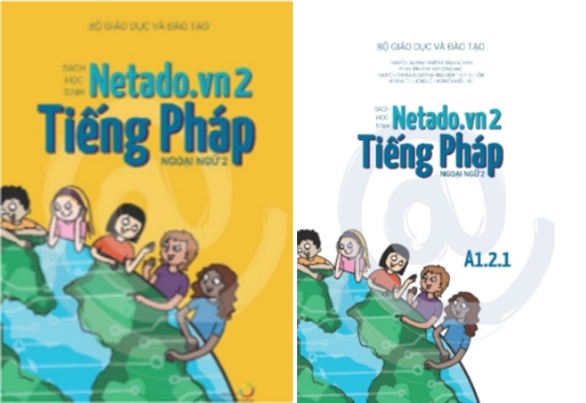















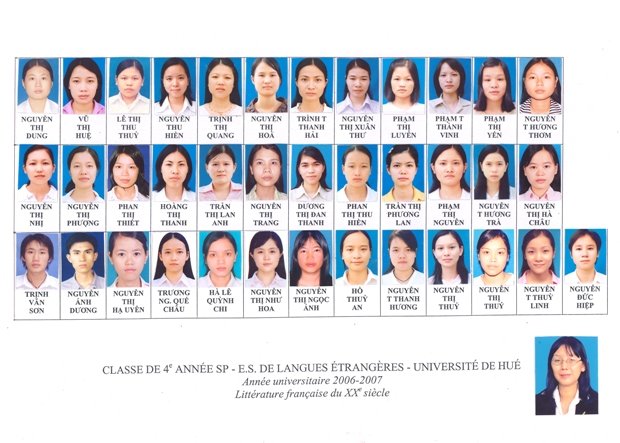










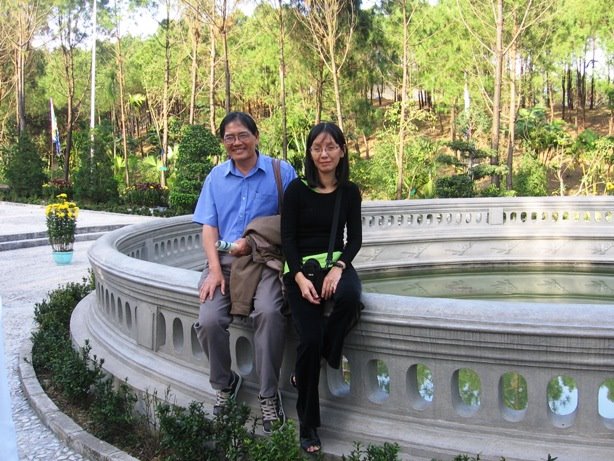

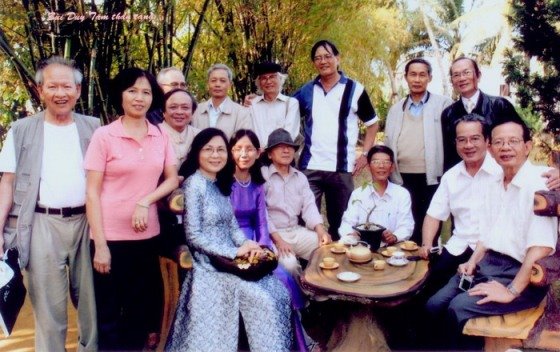

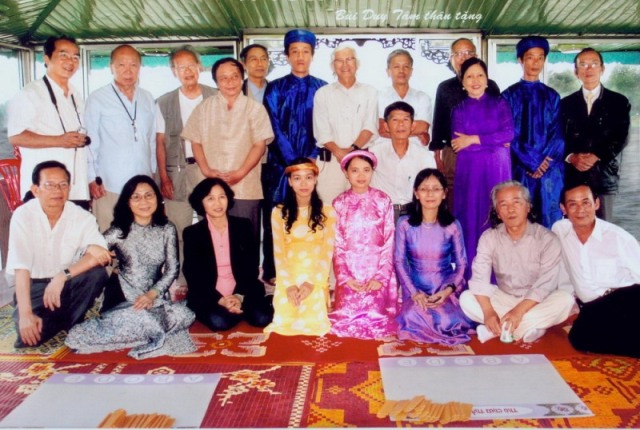

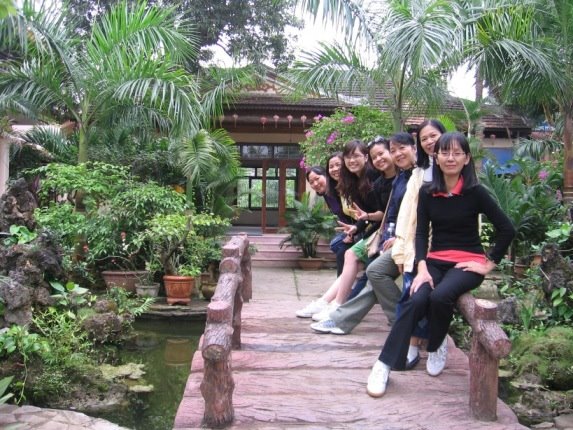



























_Page_01.jpg)





























Aucun commentaire:
Enregistrer un commentaire